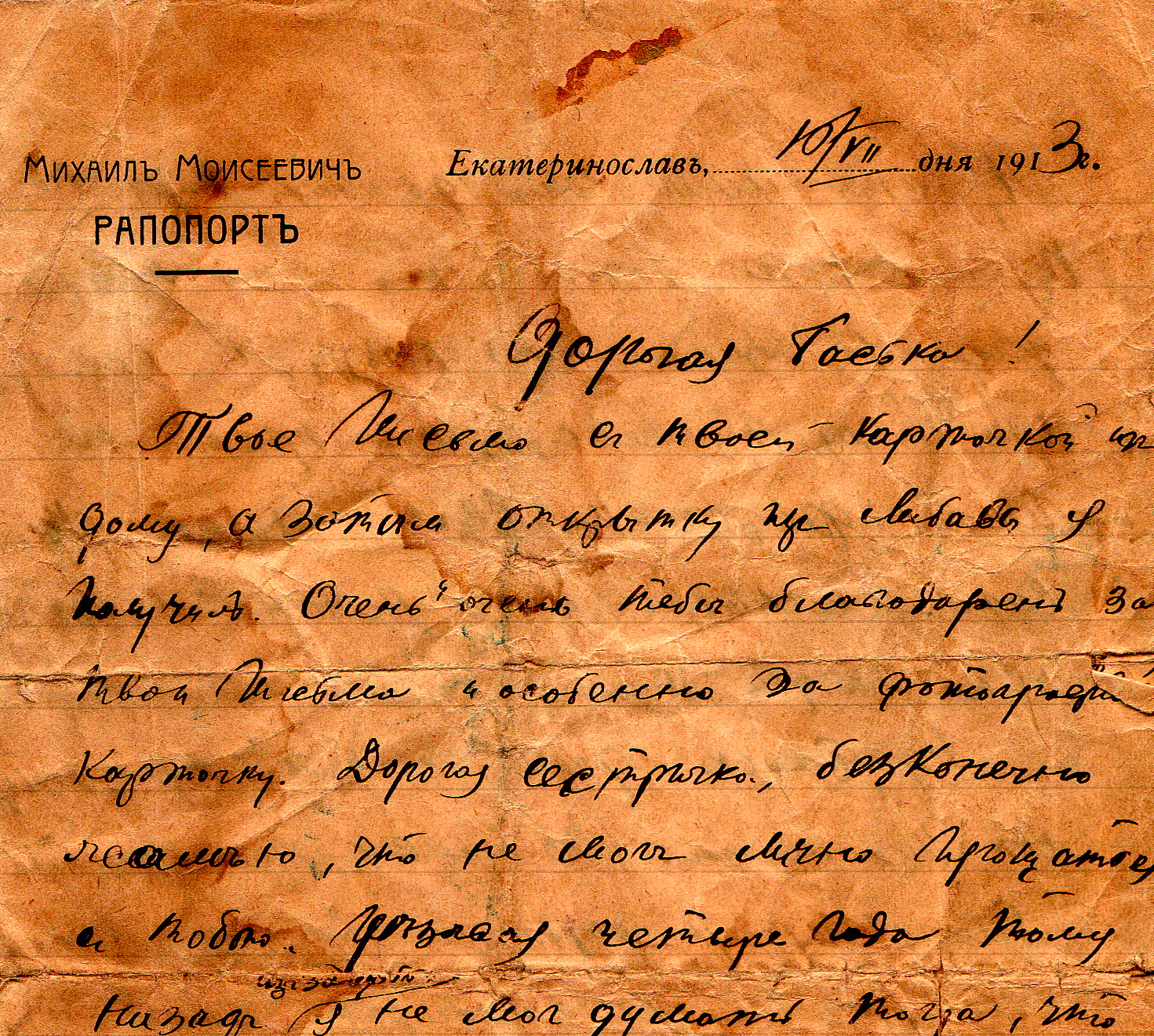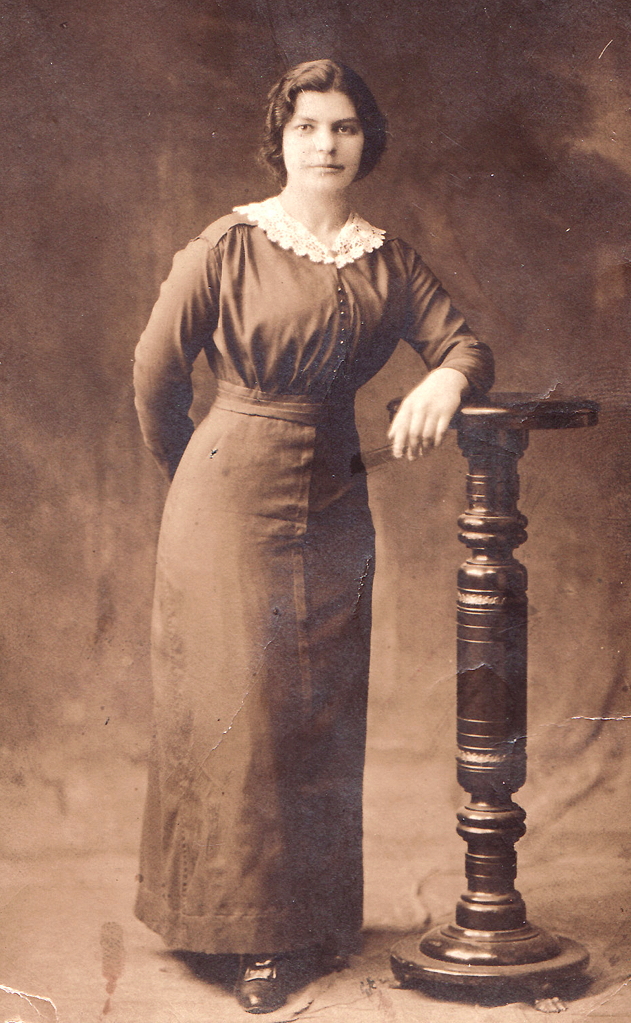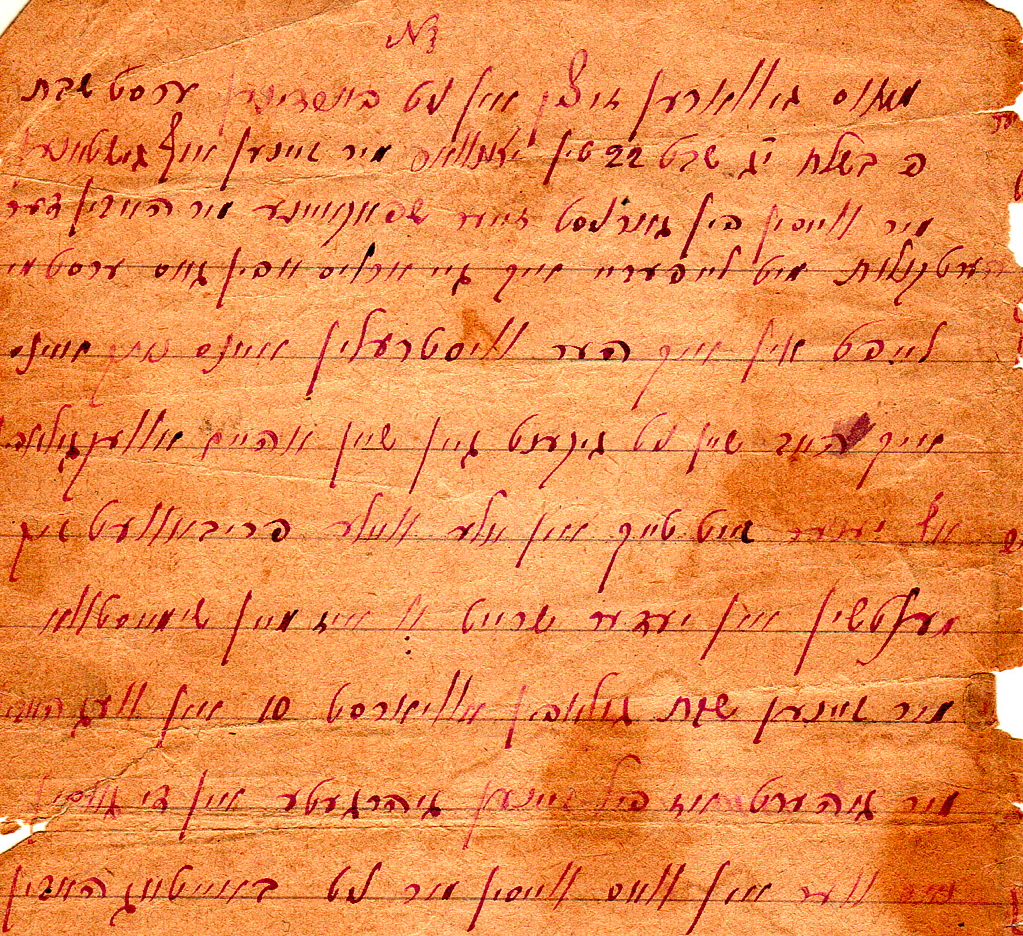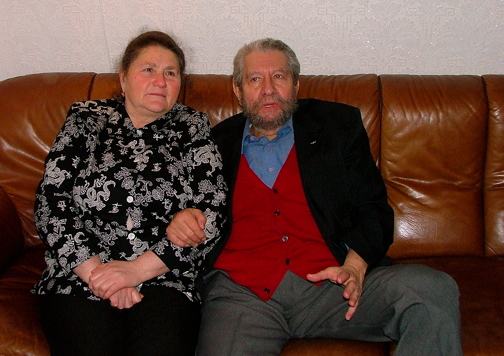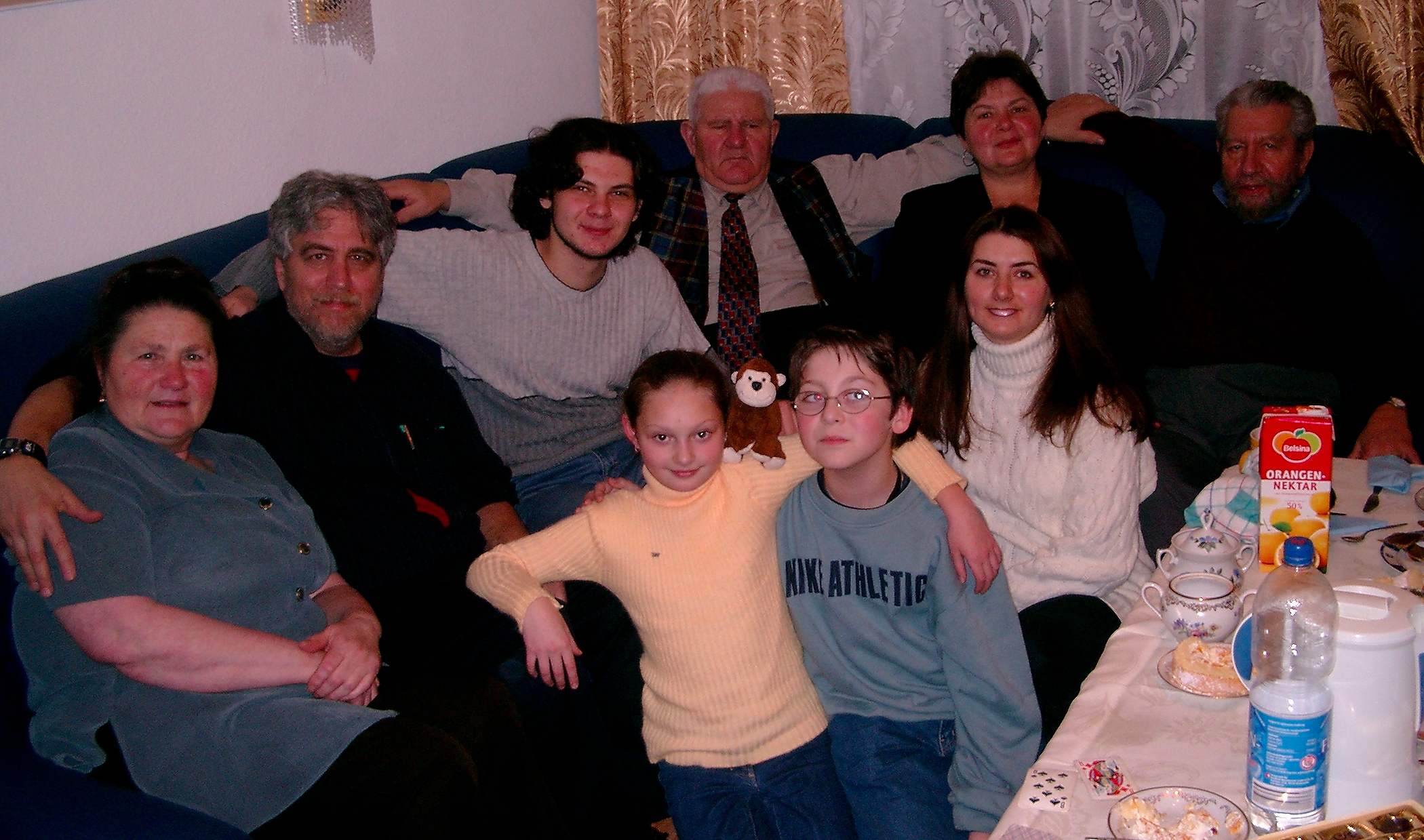
Together Again
The Rapoports of Kholmich
“Have you seen the spectacular shots taken by the Hubble telescope of new worlds being created? This is what JewishGen did for me. The universe I live in has expanded and forever changed.”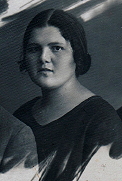
A longer version of this story was printed in the Boston Globe (29 November 2004) as “Family Secret.”—MH So you want to talk JewishGen and success stories? How about how JewishGen helped me find my family when I wasn’t even searching for them? I still find it hard to believe this unlikely tale—and I was in it! To begin at the beginning, we need to go back to the Bronx, to sometime in the nineteen-fifties, to a small apartment in my Jewish, union-sponsored cooperative housing project. This is where my grandparents Max and Bessie (Rapoport) Schechter lived, six floors above my own apartment in the very same building. The day we are imagining must have been a Monday, because that’s the day on which I made sure to feign illness, so as to better ease my way into the new elementary school week. Since my parents had to work, I would be packed into the elevator and sent upstairs to my grandparents’ house to recuperate, which a full day of TV watching certainly helped me to do.
As the day wore on, my grandparents would allow me to explore the dresser drawer where they kept small treasures and souvenirs from their various trips. On one Monday now lost in time, I came upon a bag of old letters, all yellow and brown with age. I’m sure I would have recognized that some of them were written in Yiddish, but the Russian letters must have puzzled me because I recall asking my grandmother about them. I still remember her response. “They are from my family,” she said. “What family, Grandma?” I asked. “Tell me about them.” To which she replied, in her old-country accent, “Nu, why do you want to talk such foolishness?” And with that, she ushered me over to the TV, where I sank into the utter bliss of “Queen for a Day.” These letters disappeared from my consciousness for the next forty years, a period during which I got on with life—protesting the Vietnam War, attending college, getting married, having two sons, and beginning work as a high school history teacher in Massachusetts. In 1989, my mother, Ruth Lisa Schechter, passed away and my father decided to leave their New York home to join us in our town near Boston. In preparation for the move, he cleaned out his house from stem to stern. From a high shelf, in some forgotten corner of a dark closet, there floated down . . . a bag of letters. They were Grandma Bessie’s letters.
The Legacy of the Letters They arrived right on time. With my children growing older, I wanted them to know the history of their family, which is, after all, their legacy. And so my father and I decided to have the one hundred and two letters translated. But who knew this effort would take eight years! It wasn’t easy to even find someone who could read old Yiddish handwriting, whether neat or sloppy. The letters—which covered the period 1913 to 1935, after which Stalin cut off mail service to the US—yielded many astounding secrets about my grandmother’s Russian-speaking family from Kholmich. No secret, however, was more surprising than that she had left behind nine brothers and sisters whom she had never even mentioned to my father or uncle, her only two children. Around 1998, we created a JewishGen ShtetLinks site for Kholmich and posted all this material, along with commentary. We were done! But something began to gnaw at us. We wondered what had happened to my large Rapoport family when the Nazis invaded Russia in 1941. We were certain they had been killed, if not as part of the Holocaust that consumed their six million brethren, than as a consequence of the savage German invasion that doomed more than twenty million of their fellow Russians. This is why we had not thought to look for our lost family. It never crossed our minds that they had not perished. Still we wanted to get the story, and so we hired historians to travel to Kholmich, my grandmother’s small shtetl in what is now southeast Belarus. There they conducted interviews that shed light on the brutal events of August 1941. They also unearthed a list in the State Archives of Minsk Region with the names of the fifty or so remaining Jews who were executed by an Einsatzgruppen killing squad. My Rapoport family did not appear on this list, but we posted the other names anyway on our Kholmich ShtetLinks site.
It was now the year 2000, and we were finished. Really! Well, not quite. We received an email from a professor at Hebrew University in Israel. He had seen our ShtetLinks site and wanted us to know that he had a different list with the names of a few additional Kholmich victims—which included some of his relatives. He wanted to know if we would be willing to add these names to our list. And of course we were willing, and so finally . . . project completed! All done! Finished! So we thought. Four years later, we received another email from this same professor, Albert Kaganovitch. He was writing a book about Jews from Belarus who had left the Soviet Union after it collapsed and who had moved to the Nuremberg area under a Holocaust reparations program established by Germany in 1991. Among those he interviewed, unbeknownst to him, were two daughters—Tsilya and Sofiya—of my grandmother’s youngest sister, Bayla. My cousin Tsilya had volunteered to be interviewed by Professor Kaganovitch after hearing about his research. When he finished, he wanted to check the spelling of names. However, he confused Tsilya’s mother’s married name for her maiden name. She corrected him: her mother’s maiden name was Rapoport. Professor Kaganovitch then said, “Oh, so she must have come from Kholmech.” My cousin was stunned, as she hadn’t mentioned the name of this little village. How did the professor know this, she asked? Oh, he said, an American had created a website about the Rapoports of Kholmich. And so the connection was made! [Ed: “Kholmech” is a variant spelling of the shtetl.]
Emails flew back and forth across the Atlantic, as questions were asked and details clarified. We later learned that their two brothers continued to live in Belarus, while still other relatives lived in Berlin, Stuttgart, and Israel. They had survived! The story of their deliverance can be found elsewhere. Then the great day arrived when I picked up the phone believing I was a member of a very small family and hung up a half-hour later realizing I was now a member of a very large one. The family we had researched but had never thought to look for was alive and well. The Prophecy of the On November 3, 2004, my eighty-seven year old father, Jerry Schechter, and I traveled to Nuremberg to meet our large family. What was the very first moment like? The first days? The marathon dinners? The cacophony of languages? The Yiddish songs? The toasts? The tears? Dear reader, you can see all this for yourself in a film now available online. What I can tell you is this: the reunion came and went, but it left behind a family “together again” and astounded to learn how much we shared not only in terms of history but also of values and sensibility. These were no names on a family tree. Before me were my lost relatives, the Rapoports of Kholmich! We walked out into the waiting area at the Nuremberg airport with an old photograph of my grandmother pinned to our lapels. Suddenly we saw a group lined up before us. Eyes met. Would there be polite words of hello, in one of three languages? Would there be handshakes? No, there would be neither. We were embraced and swept up in a crush of Russian endearments, and the tears flowed. In what Russian I could remember from my college days, I said: “Cousins! Hello! Greetings, with love, from America.” More tears.
Have you seen the spectacular shots taken by the Hubble telescope of new worlds being created? This is what JewishGen did for me. The universe I live in has expanded and forever changed. Why all this happened is the subject of some debate within my extended family. Some credit my early research, others call it a divine miracle, and a number claim it’s really all about Internet serendipity. But Sofiya and Tsilya, my father’s first cousins, have a different explanation. They had planned to emigrate to Germany with their families in the early 1990s, but their elderly mother, Bayla Rapoport—my grandmother’s youngest sister—was very sick, so they stayed with her in Belarus during her long illness. A few years later, just before she passed away, she spoke her last words while in a semi-conscious state. With her family gathered around her, she told them she wanted to see Basya, the older sister who had helped to raise her before disappearing into America.
In observance of Russian custom, we all sat quietly for a moment before my father and I departed for the Nuremberg airport to return to the United States. It was then that Sofiya and Tsilya explained that we had found each other because of what they called “the prophecy of the sisters.” That prophecy, they said, had now been fulfilled. When we left Nuremberg, it was as cousins leaving members of family behind. Like my grandmother nearly a century before, we would cross the ocean to America. But there was no Stalin now to stop the mail, and there was an Internet that could leap over all national borders. This is one family that can never be separated again. At the airport, as we prepared to board, amidst hugs, kisses, and tears, Sofiya said quietly: “We have not had many days like this.” And so if this unlikely tale should inspire others to search out and to celebrate their family bonds and to recall the power of love, yearning, and remembrance—well, if this should happen, I feel we can say that my great-grandfather, our family patriarch, Aaron Moishe Rapoport, accomplished a great deal a century ago in his little shtetl on the banks of the Dnepr River. Thank you, JewishGen. July 2011
|
|||||||||||||||||||||||||||||||||||||
